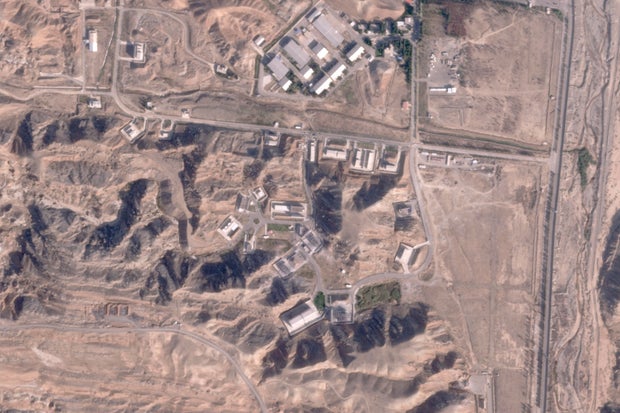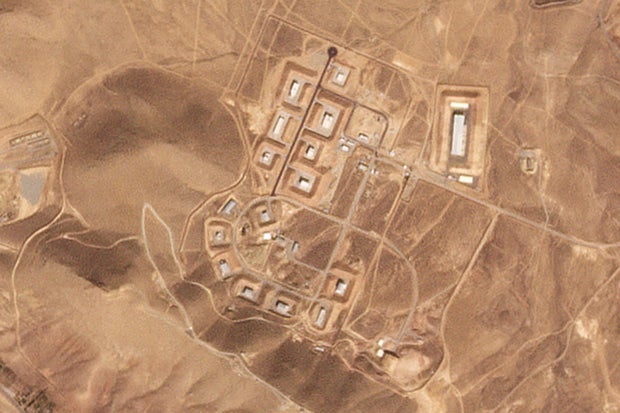CBS News
What is Swedish death cleaning? How does it support mental health?

A new series is bringing to life a cleaning style that aims to declutter both your space and soul: Swedish death cleaning.
Inspired by by Margareta Magnusson’s best-selling book of the same name, “The Gentle Art of Swedish Death Cleaning” (out April 27 on Peacock) follows Americans from different walks of life as they take a journey to declutter their home – and heart – with the help of death cleaning experts.
But what exactly is death cleaning?
As narrator Amy Poehler explains in the show’s intro, death cleaning is all about “cleaning out your crap so other people don’t have to when you die.” But it goes beyond just the physical.
While the name may sound a bit scary or depressing, the show’s psychologist, Katarina Blöm explains this style of sorting through your belongings helps clean your home while also having a positive impact on your mental health.
“We often say that death cleaning is for life,” she tells CBS News, explaining how talking about death and leaning into the uncomfortable emotions that often come with those conversations helps create a perspective shift.
“What really matters and what’s really close to your heart comes to the surface,” she says. “A lot of the show’s purpose is actually reminding Americans of all the ways they are alive. Because we will die one day, and no one knows when, so let’s make these days matter.”
Not only can it be a beneficial journey for the individual, it can also help your loved ones.
“If we can do the death cleaning and lighten our burden and lighten our load, it’s really like an act of love both for ourselves – it’s one form of self care – but also it’s an act of love for the people that matter the most to us so they don’t have to stand in that dusty basement, going through things maybe while battling grief on their own … they can enjoy their lives as well if you don’t put this burden on others.”
Who can benefit from Swedish death cleaning?
As viewers can see from the wide range of participants on the show, anyone can consider death cleaning.
“You don’t need to be old before you start doing it. You can do it any day because no one knows when we are about to die, so we need to keep things fresh, like our relationship with life,” Blöm says, but adds it can be especially helpful for two people:
- Those in the middle of a transition. “If you’re transitioning in life, that should be reflected in your home … Things will shift in your wardrobe, things will shift in your appliances,” she says, whether you’re moving to a different-sized space, changing jobs or something else.
- Those who feel shame towards their space. “If you’re surrounded by clutter that you’re not proud of, you can become ashamed, more self-critical and even stop inviting people over,” she says, adding your home should be a space you feel safe in that brings you peace and joy. “When we start to isolate ourselves, that’s really not a good trajectory. So if you notice that you’ve stopped inviting people because you’re ashamed of what it looks like at home … That’s really a warning sign that it’s time to take action.”
Tips to start your own death cleaning journey
If you want to give the process a try at home, Blöm suggests keeping these tips in mind:
Start small: Create a cleaning habit that works for you, and don’t start with the nostalgic or emotional stuff.
“Start somewhere where it’s not loaded for you emotionally so just as soon as it starts with your destiny habit just a little every day. I think you will get this momentum that makes it easier and easier to move towards the more heavy stuff.”
Be in touch with yourself: If you’re feeling a strong resistance to getting started, Blöm suggests asking yourself why. What is that avoidance protecting you from? You may find the answer is pain, she says.
“But that pain is important … That pain can actually add to your life if you can unlock it, look inside it and (find) what’s the need behind this pain,” she says, suggesting to avoid pushing those thoughts away and instead “feel your way forward.”
Get help: Death cleaning can feel like a daunting task, but you don’t have to go about it alone.
“I would highly recommend to engage your friends or a neighbor or anyone that you feel comfortable – call your kids,” she suggests. “Doing this cleaning, it’s uplifting, but it’s also a burden and tricky to face those painful moments alone. So you want to share the uplifting parts and you want to share the more heavy parts as well.”
CBS News
Satellite images show damage from Israeli attack at 2 secretive Iranian military bases

An Israeli attack on Iran damaged facilities at a secretive military base southeast of the Iranian capital that experts in the past have linked to Tehran’s onetime nuclear weapons program and at another base tied to its ballistic missile program, satellite photos analyzed Sunday by The Associated Press show.
Some of the buildings damaged sat in Iran’s Parchin military base, where the International Atomic Energy Agency suspects Iran in the past conducted tests of high explosives that could trigger a nuclear weapon. Iran long has insisted its nuclear program is peaceful, though the IAEA, Western intelligence agencies and others say Tehran had an active weapons program up until 2003.
The other damage could be seen at the nearby Khojir military base, which analysts believe hides an underground tunnel system and missile production sites.
Israel launched a series of strikes on Iranian military facilities in retaliation for the barrage of ballistic missiles the Islamic republic fired on Israel earlier this month.
Planet Labs PBC / AP
Iran’s military has not acknowledged damage at either Khojir or Parchin from Israel’s attack early Saturday, though it has said the assault killed four Iranian soldiers working in the country’s air defense systems.
Iran’s mission to the United Nations did not immediately respond to a request for comment, nor did the Israeli military.
However, Iranian Supreme Leader Ayatollah Ali Khamenei on Sunday told an audience that the Israeli attack “should not be exaggerated nor downplayed,” while stopping short of calling for an immediate retaliatory strike. Israeli Prime Minister Benjamin Netanyahu said Sunday that the strikes “severely harmed” Iran and achieved all of Israel’s goals.
“The air force struck throughout Iran. We severely harmed Iran’s defense capabilities and its ability to produce missiles that are aimed toward us,” Netanyahu said in his first public comments on the strikes.
It remains unclear how many sites in total were targeted in the Israeli attack. There have been no images of damage so far released by Iran’s military.
Planet Labs PBC / AP
Iranian officials have identified affected areas as being in Ilam, Khuzestan and Tehran provinces. Burned fields could be seen in satellite images from Planet Labs PBC around Iran’s Tange Bijar natural gas production site in Ilam province on Saturday, though it wasn’t immediately clear if it was related to the attack. Ilam province sits on the Iran-Iraq border in western Iran.
The most telling damage could be seen in Planet Labs images of Parchin, some 40 kilometers (25 miles) southeast of downtown Tehran near the Mamalu Dam. There, one structure appeared to be totally destroyed while others looked damaged in the attack.
At Khojir, some 20 kilometers (12 miles) away from downtown Tehran, damage could be seen on at least two structures in satellite images.
Analysts including Decker Eveleth at the Virginia-based think tank CNA, Joe Truzman at the Washington-based Foundation for Defense of Democracies and former United Nations weapon inspector David Albright, as well as other open-source experts, first identified the damage to the bases. The locations of the two bases correspond to videos obtained by the AP showing Iranian air defense systems firing in the vicinity early Saturday.
At Parchin, Albright’s Institute for Science and International Security identified the destroyed building against a mountainside as “Taleghan 2.” It said an archive of Iranian nuclear data earlier seized by Israel identified the building as housing “a smaller, elongated high explosive chamber and a flash X-ray system to examine small-scale high explosive tests.”
“Such tests may have included high explosives compressing a core of natural uranium, simulating the initiation of a nuclear explosive,” a 2018 report by the institute says.
Planet Labs PBC / AP
In a message posted to the social platform X early Sunday, the institute added: “It is not certain whether Iran used uranium at ‘Taleghan 2,’ but it is possible it studied the compression of natural uranium hemispheres, which would explain its hasty and secretive renovation efforts following the IAEA’s request to access Parchin in 2011.”
It’s unclear what, if any, equipment would have been inside of the “Taleghan 2” building early Saturday. There were no Israeli strikes on Iran’s oil industry, nor its nuclear enrichment sites or its nuclear power plant at Bushehr during the assault.
Rafael Mariano Grossi, who leads the IAEA, confirmed that on X, saying “Iran’s nuclear facilities have not been impacted.”
“Inspectors are safe and continue their vital work,” he added. “I call for prudence and restraint from actions that could jeopardize the safety & security of nuclear & other radioactive materials.”
Other buildings destroyed at Khojir and Parchin likely included a warehouse and other buildings where Iran used industrial mixers to create the solid fuel needed for its extensive ballistic missile arsenal, Eveleth said.
In a statement issued immediately after the attack Saturday, the Israeli military said it targeted “missile manufacturing facilities used to produce the missiles that Iran fired at the state of Israel over the last year.”
Destroying such sites could greatly disrupt Iran’s ability to manufacture new ballistic missiles to replenish its arsenal after the two attacks on Israel. Iran’s paramilitary Revolutionary Guard, which oversees the country’s ballistic missile program, has been silent since Saturday’s attack.
Iran’s overall ballistic missile arsenal, which includes shorter-range missiles unable to reach Israel, was estimated to be “over 3,000” by Gen. Kenneth McKenzie, then-commander of the U.S. military’s Central Command, in testimony to the U.S. Senate in 2022. In the time since, Iran has fired hundreds of missiles in a series of attacks.
There have been no videos or photos posted to social media of missile parts or damage in civilian neighborhoods following the recent attack – suggesting that the Israeli strikes were far more accurate than Iran’s ballistic missile barrages targeting Israel in April and October. Israel relied on aircraft-fired missiles during its attack.
However, one factory appeared to have been hit in Shamsabad Industrial City, just south of Tehran near Imam Khomeini International Airport, the country’s main gateway to the outside world. Online videos of the damaged building corresponded to an address for a firm known as TIECO, which advertises itself as building advanced machinery used in Iran’s oil and gas industry.
Officials at TIECO requested the AP write the company a letter before responding to questions. The firm did not immediately reply to a letter sent to it.
CBS News
Here Comes the Sun: Will Ferrell, Harper Steele and more

Watch CBS News
Be the first to know
Get browser notifications for breaking news, live events, and exclusive reporting.
CBS News
The Strange Shooting of Alex Pennig

Watch CBS News
Be the first to know
Get browser notifications for breaking news, live events, and exclusive reporting.











GIPHY App Key not set. Please check settings